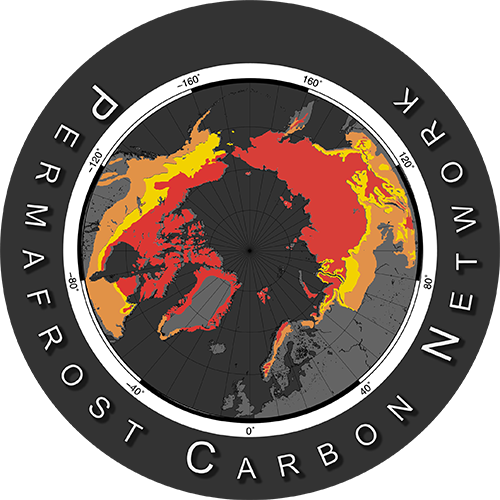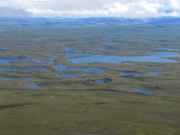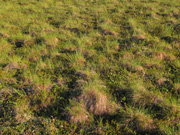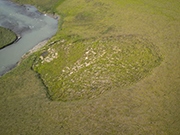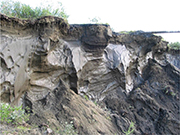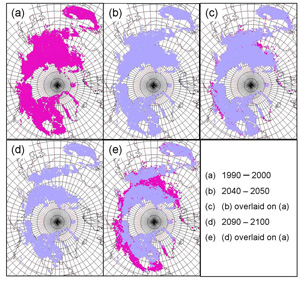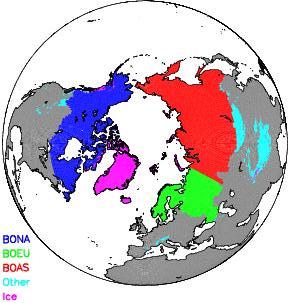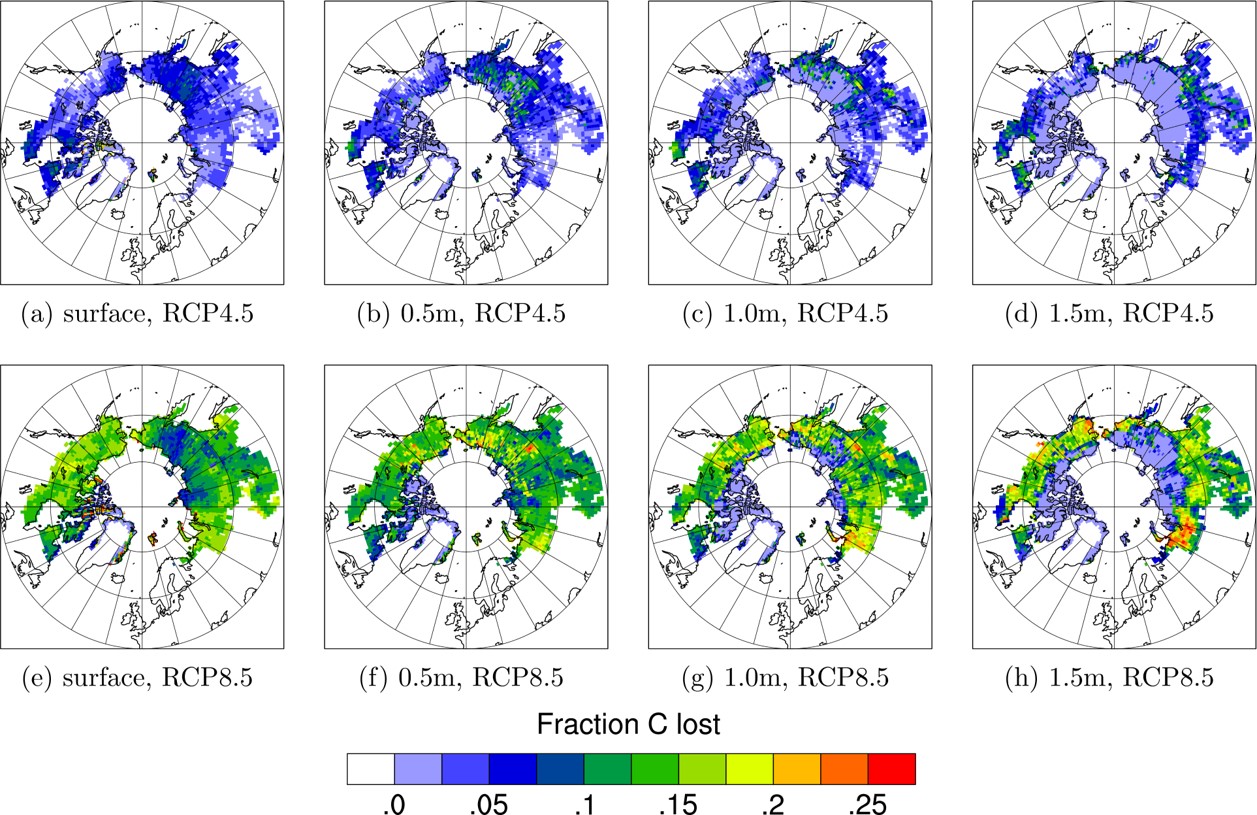Working Group: Upscaling and Modeling of Permafrost Carbon
Background and Objectives:
Important insights about the impact of carbon release from permafrost thaw on future climate have been derived from uncoupled dynamic ecosystem model and coupled carbon-climate model simulations, but there is still a great deal of uncertainty on the future rate of permafrost degradation in response to climate warming. Moreover, our understanding of the responses of the coupled hydrological and carbon cycles to permafrost degradation across spatial and temporal scales is very limited, as is our predictive capability regarding the resulting changes to biogeochemical cycles. Earth System Model (ESM) simulations have suggested that substantial permafrost thaw could happen during the 21st Century, but these results have been controversial due to structural limitations in the class of land models used in ESMs and due to biases in simulated soil temperatures associated with ESM climate biases.
Key questions we are adressing in the Model Integration working group are:
Completed synthesis Products
Dependence of the evolution of carbon dynamics in the northern permafrost region on the trajectory of climate change
In this model intercomparison project, changes in permafrost and carbon storage in the northern permafrost region are simulated from 2010 to 2299. The results show that controlling greenhouse gas emissions in the coming decades could substantially reduce the consequences of carbon releases from thawing permafrost during the next 300 years.
McGuire AD, Lawrence DM, Koven CD, Clein J, Burke EJ, Chen G, Jafarov E, MacDougall A, Marchenko S, Nicolsky D, Peng S-S, Rinke A, Ciais P, Gouttevin I, Hayes D, Ji D, Krinner G, Moore J, Romanovsky V, Schädel C, Schaefer K, Schuur EAG, Zhuang Q (2018) The dependence of the evolution of carbon dynamics in the Northern Permafrost Region on the trajectory of climate change Proceedings of the National Academy of Sciences, 115, (15), 3882-3887 https://doi.org/10.1073/pnas.1719903115
Variability in the sensitivity among model simulations of permafrost and carbon dynamics in the permafrost region between 1960 and 2009
This project evaluates model projections of vulnerability of the permafrost region by comparing 15 land surface model simulations including carbon cycle processes and permafrost for two time periods. Results from this model intercomparison help evaluate how differences in model structure and parameterization influence projected uptake and release of carbon for the permafrost region in the current and future climate.
McGuire AD, Koven C, Lawrence DM, Clein JS, Xia J, Beer C, Burke E, Chen G, Chen X, Delire C, Jafarov E, MacDougall AH, Marchenko S, Nicolsky D, Peng S, Rinke A, Saito K, Zhang W, Alkama R, Bohn TJ, Ciais P, Decharme B, Ekici A, Gouttevin I, Hajima T, Hayes DJ, Ji D, Krinner G, Lettenmaier DP, Luo Y, Miller PA, Moore JC, Romanovsky V, Schädel C, Schaefer K, Schuur EAG, Smith B, Sueyoshi T, Zhuang Q (2016) Variability in the sensitivity among model simulations of permafrost and carbon dynamics in the permafrost region between 1960 and 2009. Global Biogeochemical Cycles. doi:10.1002/2016GB005405
A simplified, data-constrained approach to estimate the permafrost carbon–climate feedback
A team of researchers developed a model that accounts for the atmospheric effect of emissions released from carbon sequestered in thawing permafrost. Compared with Earth system models, which consider much larger amounts of information in a global system, the research team used a simpler model, aiming to find clearer connections between the specific data entered and resulting projections. This modeling approach was highly data-constraint using data from recent syntheses from the Permafrost Carbon Network
Koven CD, Schuur EAG, Schädel C, Bohn TJ, Burke EJ, Chen G, Chen X, Ciais P, Grosse G, Harden JW, Hayes DJ, Hugelius G, Jafarov EE, Krinner G, Kuhry P, Lawrence DM, Macdougall AH, Marchenko SS, Mcguire AD, Natali SM, Nicolsky DJ, Olefeldt D, Peng S, Romanovsky VE, Schaefer KM, Strauss J, Treat CC, Turetsky M (2015) A simplified, data-constrained approach to estimate the permafrost carbon–climate feedback. Philosophical Transactions of the Royal Society of London A: Mathematical, Physical and Engineering Sciences, 373, DOI: 10.1098/rsta.2014.0423
For more details on this working group send an email to Ted Schuur
back to top
